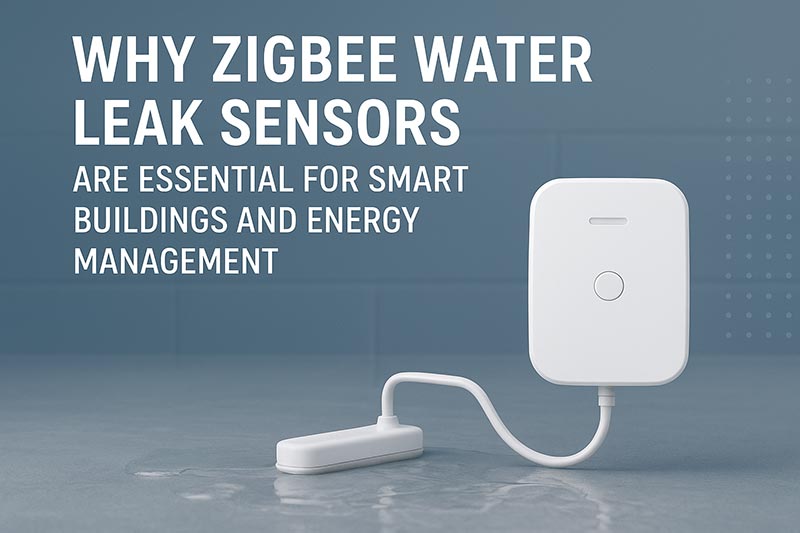Introduction
For modern B2B buyers in the smart home and building automation industry, water damage prevention is no longer a “nice-to-have” — it is a necessity. A Zigbee water leak sensor manufacturer like OWON provides reliable, low-power devices that integrate seamlessly into smart ecosystems. Using solutions such as the zigbee water leak sensor and zigbee flood sensor, businesses and facility managers can detect leaks early, reduce costly damages, and comply with modern risk management requirements.
Market Demand for Zigbee Water Leak Sensors
-
Growing Smart Building Adoption: More commercial and residential projects in Europe and North America are deploying IoT devices.
-
Insurance and Regulation: Insurers increasingly require proactive water monitoring.
-
B2B Focus: System integrators, property managers, and utilities are looking for scalable solutions.
Technical Advantages of Zigbee Water Leak Detectors
| Feature | Description |
| Protocol | Zigbee 3.0, ensuring interoperability with major IoT ecosystems |
| Power Consumption | Extra-low power, long battery life (two AAA batteries) |
| Alert Mode | Immediate reporting on detection + hourly status reports |
| Installation | Flexible — tabletop stand or wall mounting with remote probe |
| Applications | Homes, data centers, HVAC rooms, cold-chain storage, hotels, and offices |
Applications and Use Cases
-
Residential Homes: Protection against leaks in kitchens, bathrooms, and basements.
-
Commercial Buildings: Integration into centralized building management systems (BMS) to prevent costly flooding.
-
Data Centers: Early detection in sensitive areas where even minor leaks can cause significant downtime.
-
Energy and Cold Chain Management: Ensure pipes, HVAC, and refrigeration systems remain safe.
Why Choose Zigbee Over Wi-Fi or Bluetooth?
-
Mesh Networking: Zigbee sensors create a robust, scalable network.
-
Low Power Use: Longer battery life compared to Wi-Fi-based water sensors.
-
Integration: Compatible with smart hubs, zigbee leak detectors can work with lighting, alarms, and HVAC systems for automated responses.
Procurement Insights for B2B Buyers
When sourcing zigbee water leak detectors, B2B buyers should evaluate:
-
Manufacturer Reliability – Ensure the supplier provides strong OEM/ODM support.
-
Interoperability – Verify compatibility with Zigbee 3.0 gateways.
-
Scalability – Look for solutions that can be deployed across large buildings.
-
After-Sales Service – Technical documentation, integration support, and warranty.
FAQ
Q1: What is the difference between a Zigbee water leak sensor and a Zigbee flood sensor?
A: Both terms are often used interchangeably, but a flood sensor typically covers larger areas, while a leak sensor is designed for pinpoint detection.
Q2: How long does the Zigbee water leak detector battery last?
A: With Zigbee’s low-power protocol, the zigbee leak detector can run for years on just two AAA batteries
Q3: Can the Zigbee water leak sensor integrate with existing BMS or smart hubs?
A: Yes, with Zigbee 3.0 compliance, it integrates seamlessly with Home Assistant, Tuya, and other IoT platforms.
Conclusion
In an era where water damage prevention is tied to operational efficiency, zigbee water leak sensors are becoming an essential tool for smart buildings, data centers, and energy management projects. As a trusted zigbee water sensor supplier, OWON provides OEM/ODM-ready devices that help B2B partners scale quickly and reliably.
Post time: Aug-25-2025
